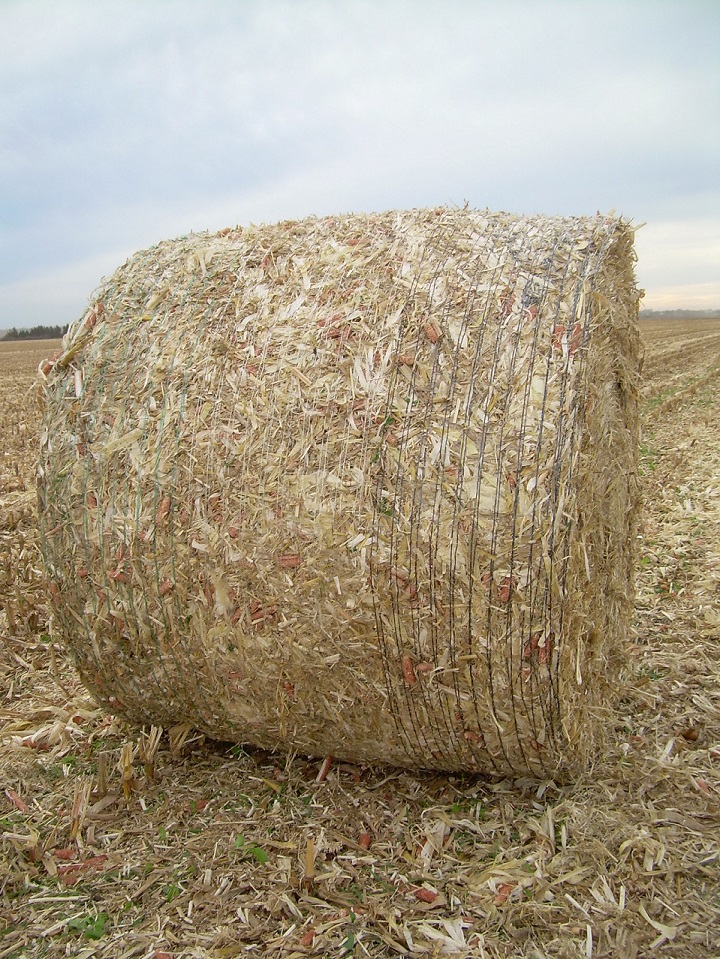
By Mary Drewnoski, Nebraska Extension Beef Systems Specialist
The short answer is a lot! The valuable components of corn stover in terms of feed are the leaf and husk because they are the most digestible (have the most energy value to the animal) but they only comprise about 40% of the residue produced. UNL research has shown that the husk is 60% digestible, the leaf is 46% digestible and the cob and stalk are only 35% digestible. Thus a bale of corn stover with more leaf and husk and less stalk and cob would have greater energy content. There are two harvesting technologies currently on the market that help a producer bale less stalk and make the bale be comprised of mainly leaf, husk, and cob. One of these is the Cornrower sold by New Holland. This attaches to a chopping corn head and catches the stover under the stalk rolls, chops it into small pieces, and placing it into a windrow. Then after harvest the windrow can be baled (a double pass system). The number of rows of stalks that are chopped in with the leaf, husks, and cobs can be changed from 2 to 8 rows. Analysis of the digestibility of the bale produced with only two rows of stalks included was 66% compared to conventionally raked and baled stover that was 43% digestible. There is also a baler sold by John Deer and Hillco Technologies that is hooked to the combine and collects the tailings straight out of the combine and bales it (single pass round baling system). This system resulted in bales that were 27% leaf, 17% husk, 42% cob and 14% upper stalk. In a feeding trial the stover baled with this system had 35% better energy value when fed to growing cattle than conventionally baled corn stover bales. Both of these selective harvest methods make the TDN value of the baled stover be similar to good grass hay although protein is lower. Another additional benefit is that the bales tend to be denser and thus reduce transportation costs per ton of DM. Furthermore, selective harvest would leave more residue on the field to feed the soil than traditional raking and baling. With current raking and baling methods 75 to 85% of the residue is removed. Even if all of the leaf, husk, and cob produced were baled only around 50% of the residue would be removed. There are likely other ways that corn stover could be selectively harvested such as turning off the spreader on the combine and baling the windrow of tailings that result without raking. When grazing corn fields cows already selectively harvest by consuming the grain first then the husks and leaves. It may be time we quit thinking about bales of corn stover as just “corn stalks” and start thinking about adding value to corn stover bales by selectively harvesting this feed resource.